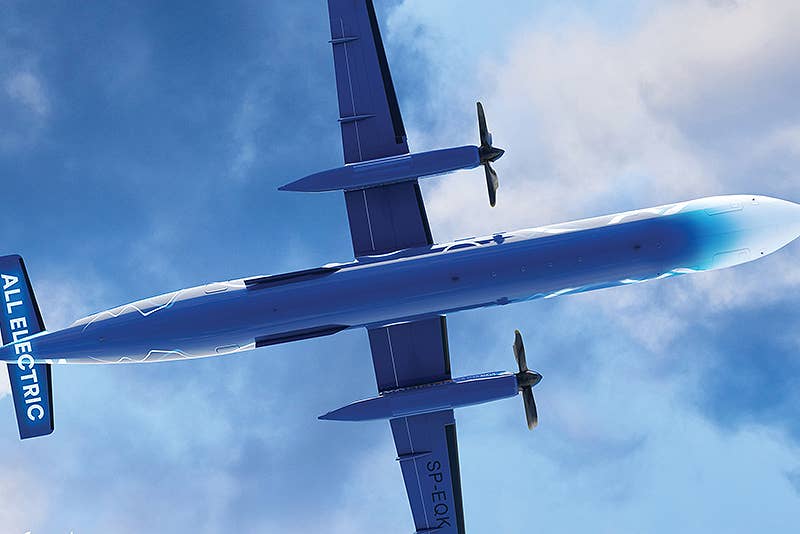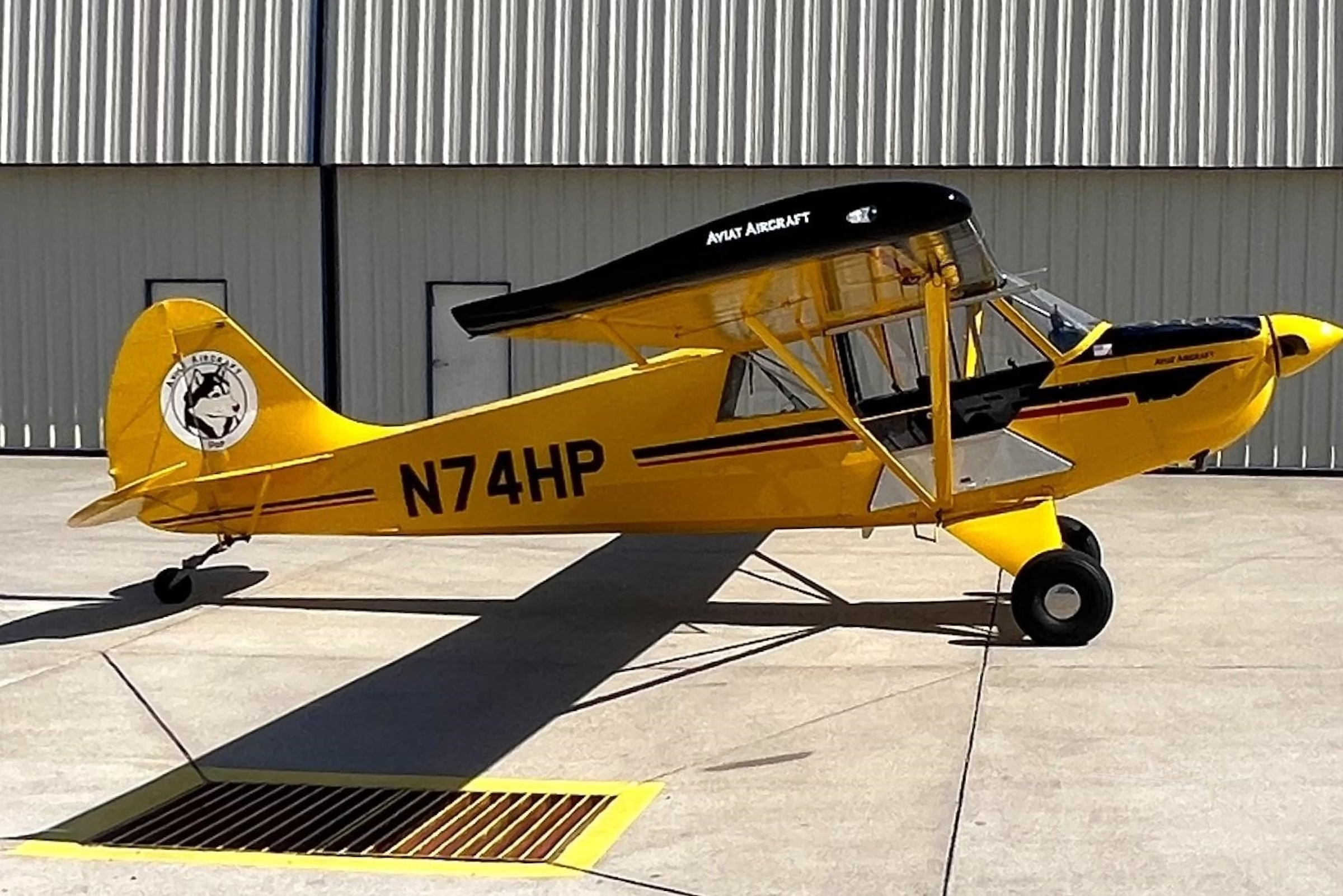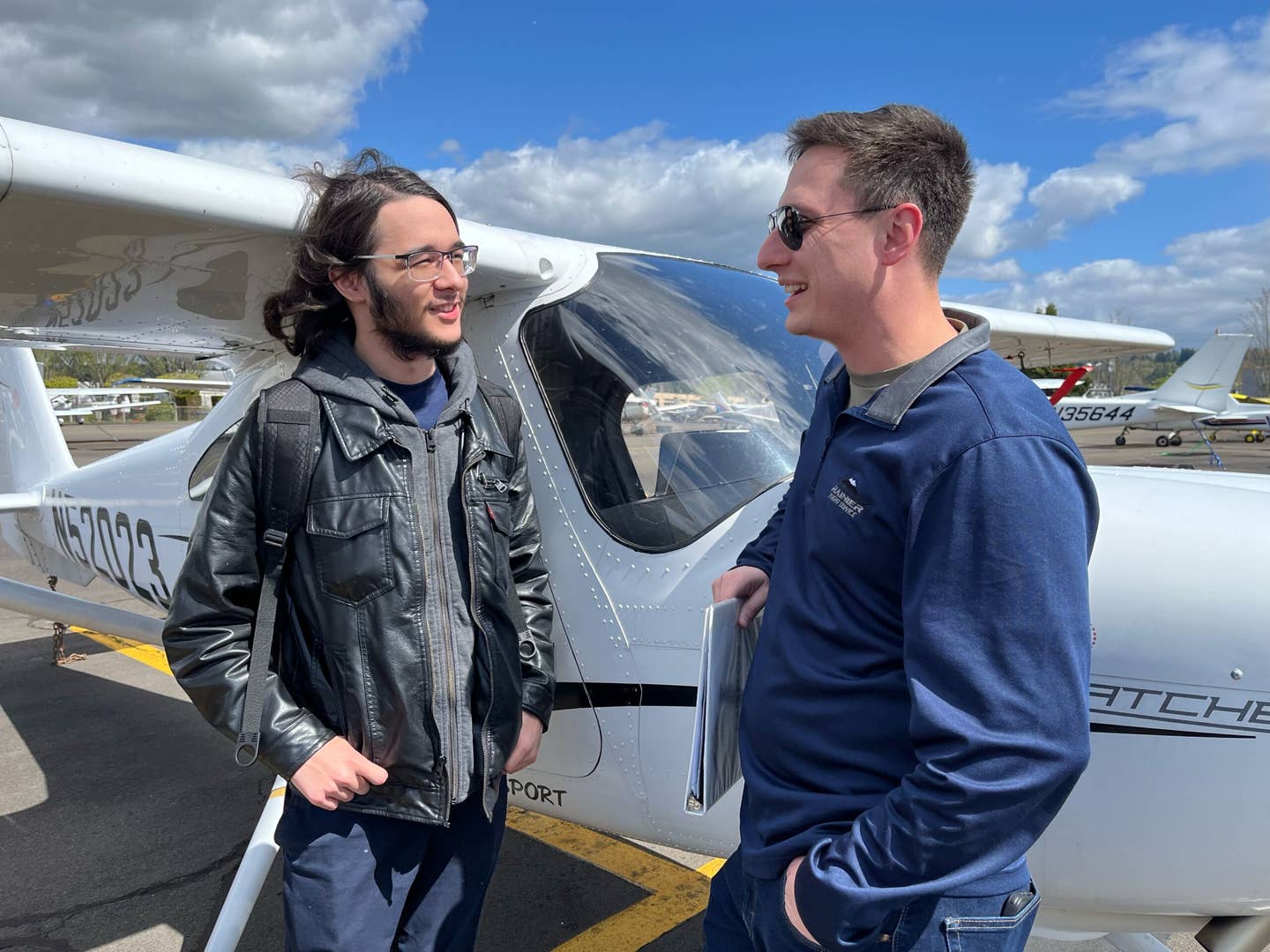
Alaska Airlines’ parent company is partnering with ZeroAvia to create what would become the world’s largest zero-emissions commercial aircraft. ZeroAvia
Alaska Air Group, parent of Alaska Airlines, is partnering with hydrogen-electric aircraft developer ZeroAvia to develop a zero-emissions passenger airplane capable of carrying 76 people on regional flights, the companies announced Tuesday.
The U.S. carrier eventually aims to “create the world’s largest zero-emissions commercial aircraft,” said Pasha Saleh, Alaska Airlines head of corporate development, during a ZeroAvia virtual seminar. “An airline operating environment is actually the ultimate laboratory to test and prove out new technologies.”
A year in the making, the partnership calls for ZeroAvia to retrofit a hydrogen-electric powertrain system into a De Havilland DHC-8-400—aka Q400—twin-engine turboprop. Alaska Air Group also becomes a ZeroAvia investor as part of the agreement.
The experimental airplane, which is expected to have a maximum range of 500 miles, is part of Alaska Airlines’ goal of reaching net zero carbon emissions by 2040.
ZeroAvia said it plans to set up a project base in Seattle and work closely with aircraft regulators to make sure the plane meets safety and operational requirements. The deal also includes options for Alaska Airlines to purchase conversion kits for its regional aircraft, starting with its Q400s. ZeroAvia and partners such as Shell will supply ground fuel production and dispensing infrastructure as part of the partnership, the airline said.
“The reason we’re doing this is Alaska really believes that airlines can play an outsized role in making electric and zero-emissions aviation possible.”
“The aviation industry is one of the hardest industries to carbonize,” said ZeroAvia founder and CEO Val Miftakhov in a statement. “With this collaboration, we are one step closer to achieving our goal of making our skies emission-free.”
In recent months, ZeroAvia has broken ground in developing hydrogen as a viable aviation fuel source. In September 2020, the company used a retrofitted Piper Malibu Mirage in the U.K. to make the world’s first hydrogen fuel cell-powered flight of a commercial-grade aircraft.
For its experimental aircraft, Alaska Airlines’ Q400 will be outfitted with a ZA2000, ZeroAvia’s largest powertrain platform, which is capable of producing from 2,000 to 5,000 kilowatts of power.
“We believe that by working closely together with leading-edge technologists, like the folks at ZeroAvia airlines, we can dramatically accelerate the development and implementation of the technology,” Saleh said.
“We can quickly identify what it would take to operate these things, both from a labor perspective and what actually happens out there on the flight line.”
“We’re not waiting for technology to happen to us,” he added. “We’re having a hand in directly shaping it.”

Sign-up for newsletters & special offers!
Get the latest FLYING stories & special offers delivered directly to your inbox






